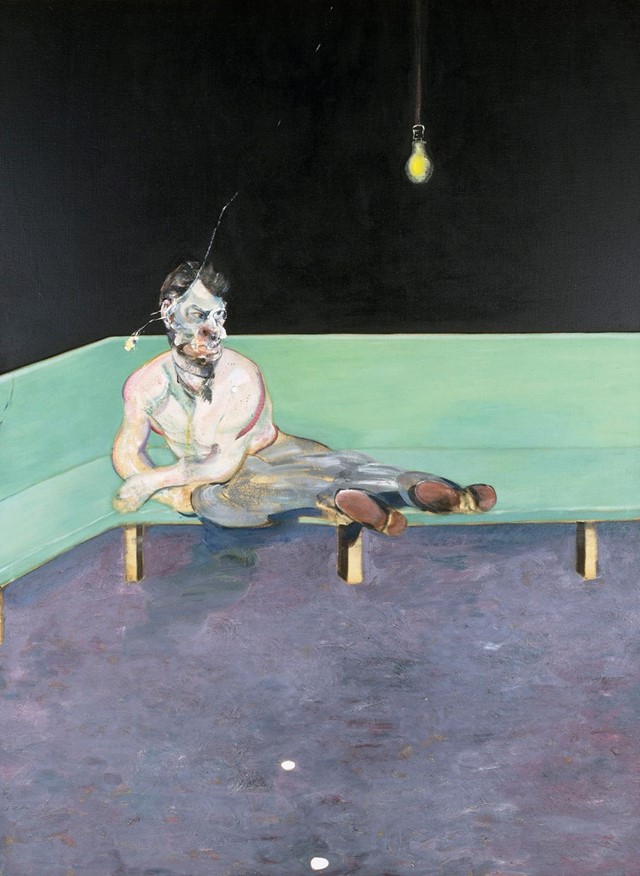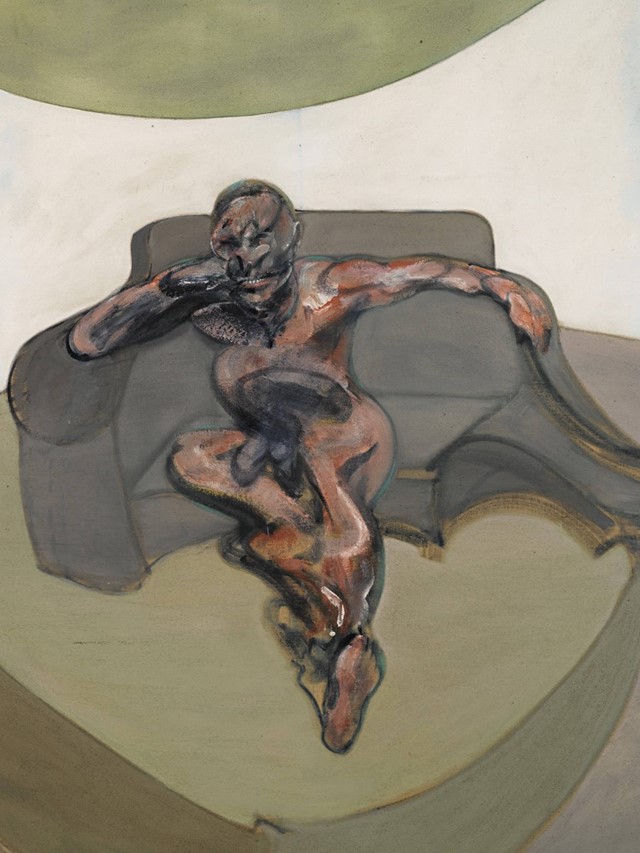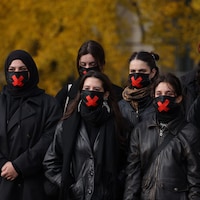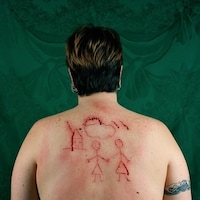Bacon’s art both repulsed and fascinated audiences equally, but revealed our most intimate, transgressive and unruly nature
In April 1945, then 35-year-old Irish-born painter Francis Bacon debuted what would become his first seminal piece of work, at the Lefevre Gallery in London. Titled “Three Studies for Figures at the Base of a Crucifixion”, the work was a triptych of paintings allegedly modelled on the Ancient Greek tragedies, The Oresteia. It presented distorted, humanoid creatures set against a fiery orange backdrop. It was shocking, and it gained Bacon the title of one of Britain’s most established painters.
“From the moment Francis Bacon started exhibiting regularly, in 1945, critics were fascinated and repelled by his work. The shouting mouths, distended eyes and distorted or swelling body parts of his figures were seen as markers of brutality or the result of uncontrolled urges and feelings of disquiet,” explains Elena Crippa, curator of the just-opened exhibition, All Too Human: Bacon, Freud and a Century of Painting Life, which features several of Bacon’s works. “This was at a time when artists were expected to produce work that reflected a socially progressive role. Bacon was not painting idealised beings but revealing people’s most intimate, transgressive, and unruly nature.”
“This was at a time when artists were expected to produce work that reflected a socially progressive role. Bacon was not painting idealised beings but revealing people’s most intimate, transgressive, and unruly nature” – Elena Crippa
Whereas 70s punk subculture was a product of a disenfranchised generation of British youth and the rise of Thatcherism, unemployment and racial tensions, Bacon’s work was symbolic of post-war Britain – a feeling manifested in the shadowy aftermath of World War II and the horrors of the Holocaust. His works shone a light on the dark realities of a collective shattered innocence. But his art was also deeply personal. Growing up his family moved numerous times between Ireland and England, imbuing him with a sense of displacement that would linger through his lifetime. It is said that the elements of sado-masochism in his work can also be traced to this time when he was punished by his father for slipping into dresses and his mother’s underwear. His homosexuality only caused further upset and he was thrown out of home before heading to London with an allowance of £3 a week from his mother.
As a self-taught artist, Bacon’s paintings would often forgo brushes for rags, his fingers, or by applying paint straight from the tube, and creating a smeared, smudged, raw physicality. He also preferred to work from references such as the freakish figures captured by photographer Eadweard Muybridge, a book on anatomical diseases of the mouth that he purchased secondhand in Paris in 1935, and a specific scene of a screaming nurse from Sergei Eisenstein’s 1925 film Battleship Potemkin, as opposed to the more acceptable practice of employing life models.

Paintings such as Bacon’s 1945 “Three Studies for Figures at the Base of a Crucifixion” hold the same punk essence that the Sex Pistols’ 1977 “God Save the Queen” does – albeit predating the latter by three decades. Both expressed deep resentment and each seemingly came out of nowhere. They also present an Expressionist vision of the world, where art reflects the deep feelings and emotions of its artist. In an interview with art critic John Gruen, Bacon said, “I feel ever so strongly that an artist must be nourished by his passions and his despairs. These things alter an artist whether for the good or the better or the worse.” In the 70s, these feelings were presented sonically through angst. For Bacon, they were via the recurring motif of the silent, but screaming mouth.
The artist’s romance with former East End criminal George Dyer – who he met in London in late 1963 – was arguably central to the chaos of Bacon’s later paintings. Described by critics as turbulent and ultimately tragic, Bacon painted his lover obsessively, even as they became distanced. In 1971, two days before the opening of Bacon’s retrospective at the Grand Palais in Paris, Dyer committed suicide. Bacon was consumed with grief but channelled it through his works such as “Triptych May to June 1973”, which depicts an overdosing Dyer. In it, Bacon's obsession with life, sex and death combine against a vacuous black background: to the left, Dyer sits on the toilet shitting, and to the right, he vomits into it. In the central image, Dyer is barely there, engulfed by a dark shadow that resembles an angel. The Times wrote that Bacon had once described the painting as an exorcism, adding that it was one of his most brutal paintings, based solely on facts.
“(The violence of paint is) to do with an attempt to remake the violence of reality itself” – Francis Bacon
It is because of his own life experiences and otherworldly references that Bacon’s works could never have conformed to the ideals of a post-war world – which were emphasised in the gestural brushstrokes of Abstract Expressionism (thanks to artists such as Jackson Pollock or Willem de Kooning) or Surrealism (namely via Spanish artists Salvador Dali and Pablo Picasso). While these movements inspired Bacon – he once described Picasso as “the father figure” and “the reason I paint” – they focused on the potential of the unconscious mind. Instead, Bacon focused on the role of the body in real life human experience. Illustrating these in primitive, animal-esque forms, or “figures (in) moments of crisis”. He told David Sylvester, “When talking about the violence of paint, it’s nothing to do with the violence of war. It’s to do with an attempt to remake the violence of reality itself… the violence of suggestions within the image which can only be conveyed through paint.” Just like punk would – Bacon’s work cut straight through the bullshit. And – alongside his School of London contemporaries, such as Frank Auerbach, Lucian Freud, and Leon Kossoff – peeled back the flesh to unleash raw emotion, desire, and darkness.
All Too Human: Bacon, Freud, and a Century of Painting Life – by Elena Crippa, curator, Modern and Contemporary British Art, and Laura Castagnini, assistant curator – runs at London’s Tate Britain 28 February – 27 August 2018




